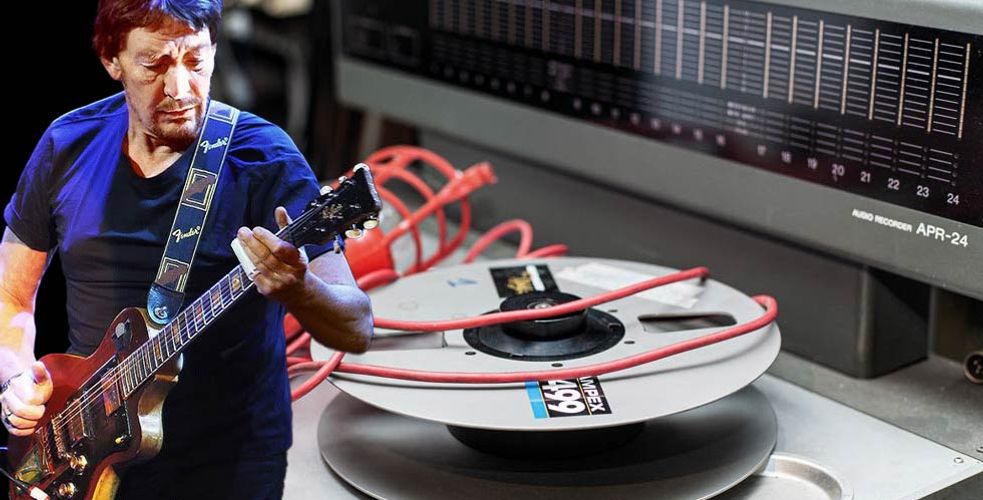"At Miraval, I recorded with Chris Rea. And drove his Lotus 7"

In 1989, Miraval sound engineer Diane "BJ" Koné recorded Chris Rea's best-selling album, The Road to Hell, with Jon Kelly in this legendary studio.
Women in the world of recording studios and sound are few and far between, and are less well known than their male counterparts when they have contributed to major records. Diane Koné, nicknamed "BJ", belongs to this small family - we can also mention Sophie Masson - and even more rarely, she recorded at the famous Studio Miraval. She is one of the rare female witnesses to the great years of the studio founded by Jacques Loussier, from 1977 to 1992. Patrice Quef is manager of the studio, which is close to the Côte d'Azur and Provence, which are so attractive, especially to the British.

How and why did you come to Miraval?
I trained mainly at the Marcadet studio in Saint Denis, which took in a lot of young assistant sound engineers. At the time, there was a plethora of effects there (reverbs, muti-effects, preamps, compressors etc.), both state-of-the-art and vintage, an SSL console (as well as a Neve later on) corresponding to the expectations of those involved in international music production at the time, and we worked there for long, even very long days, an essential step in learning the trade and progressing. All the little gang who worked there or had worked there knew each other, and could occasionally help each other out, so to speak. So one day Franck Segarra, who knew Miraval from working there, told me that Chris Rea was going to record there and that Patrice Quef was looking for someone to help him record Road To Hell. That's how I got there. I'll be doing this album and also Julia Fordham's Porcelain, I can't remember the order.
Why do so many artists and rock stars come here to record?
The studio is the main reason, of course, but so is the location:
In terms of equipment, Miraval wasn't the best equipped - not in the 'always more' way of some Parisian studios - there was an 'old' SSL E series console, the minimum required in terms of effects, some of which were quite atypical I have to say. In any case, on most of the big projects, the productions rented the rest of the equipment from Hilton Sound. On the other hand, the live room was interesting with the chapel part perfect for drums, and booths for live recordings in good conditions.
The 'residential' aspect, the fact of being able to stay on site, is of course attractive both in terms of work and family life, and the English love the Côte d'Azur. Many of them are crazy about cars; they have some very nice ones and love to drive them. Chris Rea arrived in a Ferrari and I remember that during a day off we all went to Mougins to visit the now defunct Automobile Museum. I was allowed to drive Chris Rea's Lotus7 on the way back. There were hardly any residential studios in France at the time, and to be able to live and work there with all your little family has a certain charm. Chris Rea stayed there with his 3 J's: his wife Joan, and his daughters Josy (Josephine, the one in the song) and their youngest Julia.

So you were hired without any further testing or selection?
Yes, but as I mentioned earlier, going through Marcadet and a few other studios was like a blank check. Word of mouth is still the most reliable. The big French studios operated in a slightly softer way, perhaps, in terms of personnel, than across the Channel, where the classic route to becoming an engineer was tea boy, tape-op, recording engineer, etc...
What memories do you have of that?
It's a long way back in my memory because we're talking about an album that dates back more than thirty years. But strangely enough, I listened to it again just recently and I hadn't heard it for ages. And I noticed the absolutely unique sound, because it's rare, of the Quantec reverb.
Is it a springboard to be associated with an album by a star that sells well?
Unfortunately not. The end of the 90s was a very tough time for studios, with major technological and musical changes, the emergence of home studios and much lighter recording solutions, and urban music (more programming). We had to adapt. I went on to work at Davout, Digital Services and set up a studio in Senegal, among other places, and then in the early 2000s I had to choose a form of security...
I think I can say that I experienced the end of the great years.
Diane BJ Koné now works for France Télévisions.
My memory of being and recording at Miraval is very special. Jon Anderson
Patrice Quef est décédé. Un livre d'or a été fabriqué par ses enfants, au sein duquel on retrouve des témoignages des artistes passés à Miraval, dont Jon Anderson, Cure, Chris Rea, Pink Floyd, Maxime Le Forestier.. et qui ont été marqués par le studio et les lieux. Brad Pitt et Damien Quintard y sont installés, en ont fait une "affaire commerciale et très médiatisée. Chez TF1, quelques dirigeants se souviennent que leur père leur parlait de Miraval.
Manuel Jacquinet.

Studios de Légende, secrets et histoires de nos Abbey Road français
Beautiful book with exclusive photographs. 352 pages. Weight: 1.3kg!
Published by Malpaso-Radio Caroline Média.
45 euros.






